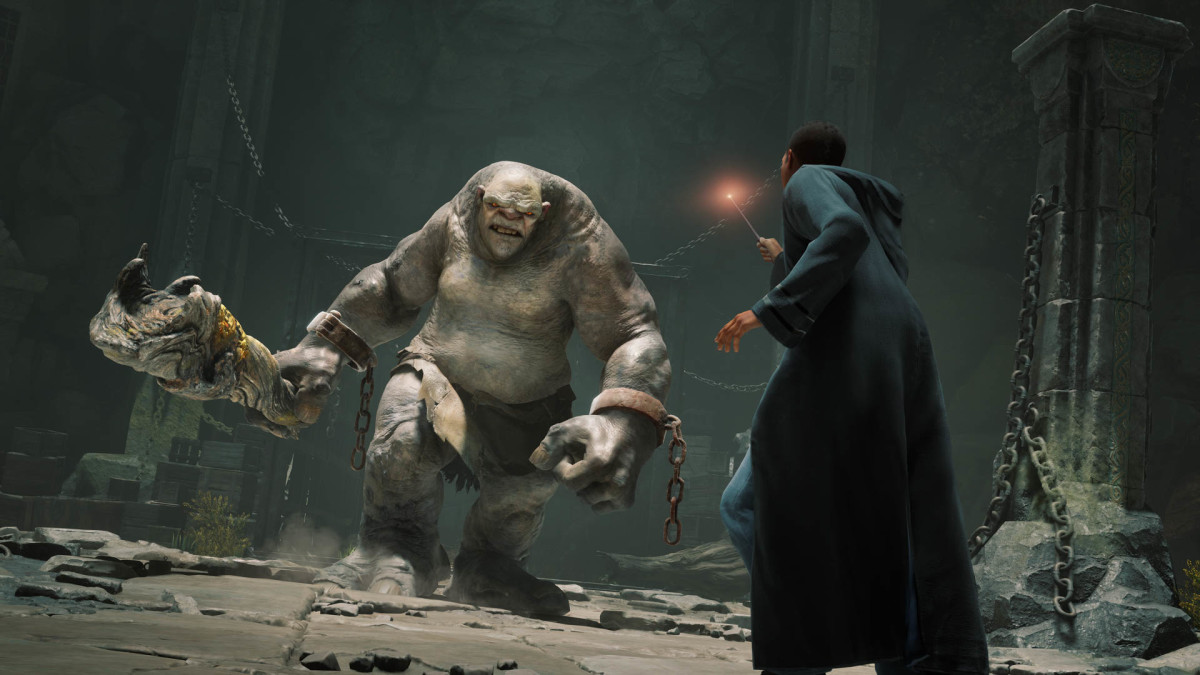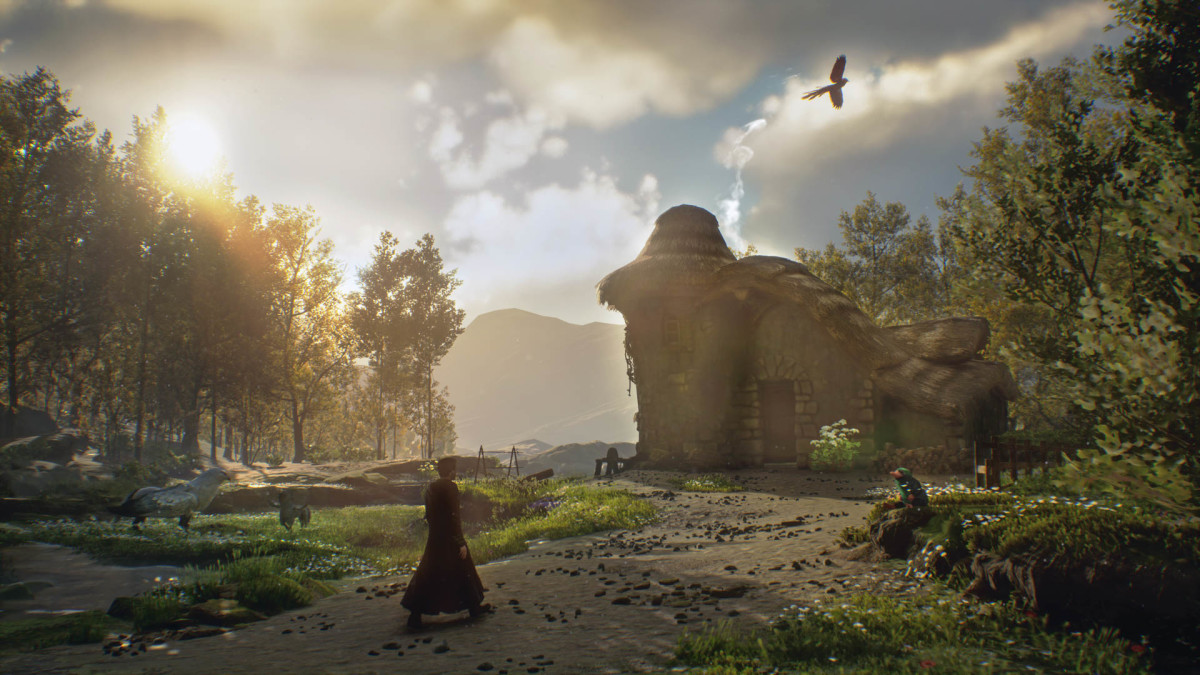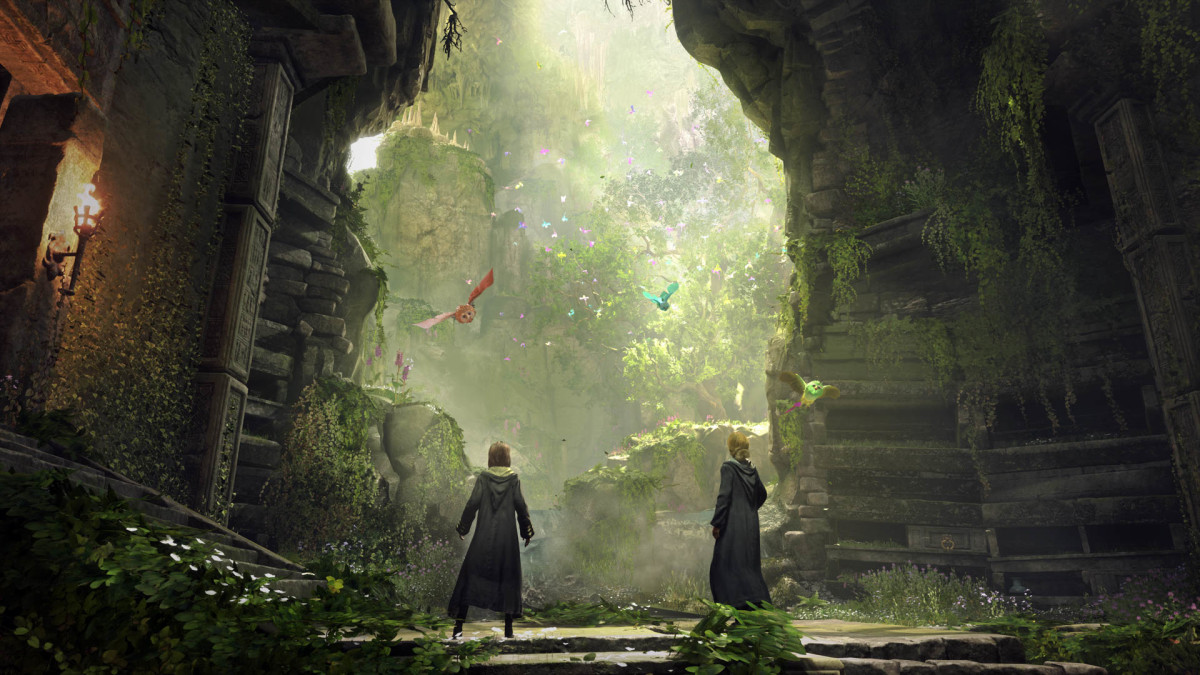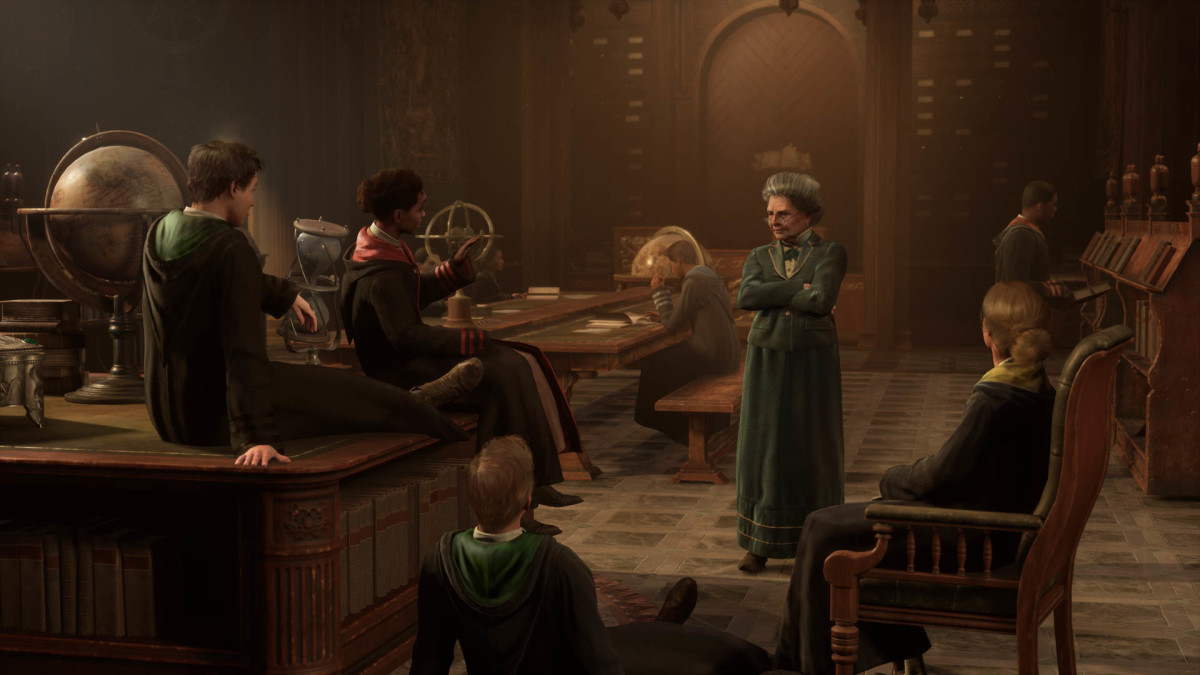Hogwarts Legacy review: magical

Editor’s note: Hogwarts Legacy is finally here, landing amid a wave of controversy due to book author J.K. Rowling’s views about transgender people. While Rowling isn’t directly involved in creating the video game, developed by Avalanche Software, she profits from sales of anything related to the Wizarding World. Because of this, many have chosen to boycott the game. We’ve written an explainer of the Hogwarts Legacy controversies so you can make an informed decision.
The first time Hogwarts Legacy grabs you is when you’re let loose into the world. It’s not simulated like a Rockstar game, with complex AI routines and random encounters, but it feels alive because of the details – magical watering cans splashing on crops, floating hedge trimmers cutting away, students playing bat and ball, ghosts chasing each other through corridors, talking paintings, and suits of armor that come to life as you pass, saluting, humming, and occasionally beating each other up. A lot of these magical elements are interactive, too, giving the world a tactile feel.
Head into the village of Hogsmeade and you’re met with something straight out of a fairy tale. Every building leans at an angle, spewing black smoke from crooked chimneys. Troublemakers are tossed from shops as magical buskers play to a crowd. Pop into the clothing store and you can activate the mannequins in the windows, causing them to pose. Go into the sweet shop and you can stuff your face with snacks that make you levitate or cause you to breathe fire. Head into a pub called the Hog’s Head and you’re met with a sentient, drooling swine head, leering over the bar from a trophy mount.

Out in the larger world, there are mysterious caves, head-scratching puzzles, mythical creatures, sleepy hamlets, enemy encampments, different AI factions battling among themselves, and more. When you crest a hill on your broom or mount and you see the wonky spires of Hogwarts in the distance, backed by the orange glow of a sunset, it’s enough to take your breath away.
Over the course of the game, you’ll see all of this by day, night, and even during different seasons. It’s one of the most enjoyable open worlds I’ve ever explored – dense rather than sprawling, hand-placed rather than generated by some algorithm. As someone who couldn’t care less about Harry Potter, it was a nice surprise.
Hogwarts Legacy sits somewhere between Bully and Fable. You spend a year as a student in the magical school of Hogwarts, learning and perfecting spells as you attempt to uncover the mystery behind an ancient magic that only you can wield. Along the way, you make – usually binary – choices that shape your character, such as deciding whether or not you want to learn the dark arts.
Some of the choices you make are significant, but the majority of them are just there for flavor. For example, one of your teachers asks you to keep something secret early on, and other students will attempt to get it out of you over the course of the game. Every time I was presented with this choice, I kept it to myself. Later, when the story demanded it, my character just blurted it out anyway. But as long as you’re not expecting BioWare-level choice and consequence, it’s not a deal-breaker. Like the Hogwarts Express, the story it wants to tell is only going one way.

At least you can express yourself in how you dress. Hogwarts Legacy is full of floppy hats and swirling capes, and there’s loot everywhere you go. A lot of it is junk that you’ll want to sell off, but everything you pick up builds out your fashion options, allowing you to transmute clothing to look like anything you’ve ever picked up. A godsend, since I spent the first eight hours of the game looking like a complete dork to fire off slightly stronger spells.
Magic is another thing the game gets right. While it doesn’t do awe-inspiring meteor showers like Dragon’s Dogma, everything you do has a real punch, right down to your basic cast. It’s a bit like other Warner Bros.-published games – Batman: Arkham, Mad Max, and Shadow of Mordor – in how it surrounds you with enemies and lets you slip between them with agile attacks. Your character fires off their wand with the flourish and style of someone who’s watched the movie Equilibrium too many times. Let’s call it Wand Kata. It’s a bit fiddly because of the sheer number of spells you have access to, but it looks and feels magnificent once you master it.
Your basic attack is a four-hit combo of magical blasts, but you can combine this with specific spells to cause more damage. Your kinetic spells – which pull people into the air, towards you, blast them away, and slam them into the ground – can be mixed with these basic attacks to juggle enemies into the air for extended periods, akin to a proper character action game. There are also fire-based spells, ice-based magic, slowing, disarming, and curses, which make other spells more effective and branch out to hit more enemies. I also appreciate the stealth attack, which petrifies an opponent and sees them stiffen before falling to the floor like a goat playing dead.

Then there’s your equipment, such as potions that make you more durable, or one that surrounds you with a rain cloud and fires lightning bolts in an area around you. On top of that, you can counter and dodge (there’s also a teleport dodge, but enemies seem to home in on you when you use it, for some reason), or fire off your ancient magic, throwing people around like ragdolls and turning them into harmless chickens. Or, you know, you can just blast them off a cliff.
Yeah, whether you’re roleplaying as a good witch or wizard or not, you’re going to kill a lot of people. Poachers, dark wizards, and goblins are all fair game. The game’s sense of morality is a bit all over the place. One character actually refers to the goblin rebellion as “the goblin problem” without any sense of irony. You also meet a house elf who’s had his ear chopped off by his master and keeps it that way to remind himself of his master’s “good heart”. Your character doesn’t even comment on it. And when you unlock your own customizable space in the Room of Requirement, you can actually mount dead house elves’ heads on your walls. I mean, come on. Not a good look.
In a couple of missions, it seems to regain a bit of self-awareness, such as one that paints the wizards as colonizers and tasks you with retrieving a goblin relic from a tomb, even if you’re only doing it for selfish reasons. It also suffers from the usual RPG dissonance. In one scene, a shopkeeper was mourning the death of her brother, only to switch immediately to her default, happy state when I spoke to her straight after.
The developers have also seemingly snuck in some protests against Rowling. One character you meet hints that she used to be a wizard before she became a witch. In the character creator, you can choose whatever body type you want, along with any voice type, as well as whether you’d like to sleep in the witch or wizard dorms. Obviously, that doesn’t offset any harm caused by Rowling’s views, but it would be quite funny to see her denounce the game because of it.

Another thing I really appreciate is how it implements the crafting mechanics. Rather than being a boring menu option, you customize the Room of Requirement and fill it with planters and potion stands, then you brew potions and plant your seeds before you head off for another quest. When you come back, they’re all done.
If you want to upgrade gear, you have to use animal parts. Other open-world games do this by adding hunting mechanics, where you scout them out, kill them, and carve them up. Here you capture them to protect them from poachers and release them into your Vivarium – a large space where they can roam free – and you take care of them by feeding and brushing them. Want more stuff? Be nicer to your beasts, and maybe breed some more while you’re at it. The animations on the creatures are adorable, and it’s nice to have a breather with them in-between big quests. My only gripe here is that there are a bunch of spells specific to the Room of Requirement and Vivariums, but you have to set them and unequip them every time you enter. It would have been a nice quality-of-life addition if your spellset automatically equipped these as you enter and switched back when you leave.
It’s also cool how the Hogwarts classes work as mini tutorials for your various abilities. Some even come with minigames like a wizard version of bowls, broom races, and combat arenas. You only do one of each class and the rest of your spell progression is tied to assignments, which are basically challenges to complete in the open world. Again, it’s a smart way to teach you all of the game’s systems without leaving you feeling overwhelmed. However, don’t go into Hogwarts Legacy expecting a Persona-style life sim.
Aside from a few bugs and a bit of dodgy writing, Hogwarts Legacy is one of the most enjoyable open-world games I’ve played. Not quite Elden Ring, but it embarrasses the Assassin’s Creed games when it comes to mission variety and a sense of exploration. Avalanche Software is a studio best known for creating middling tie-in video games for Warner Bros., so it would be understandable for you to expect Hogwarts Legacy to land in the same ballpark. That’s not the case, though. Especially as a first attempt at this kind of game within the Harry Potter universe, Hogwarts Legacy is magical.
Score: 9/10
Version tested: PS5
